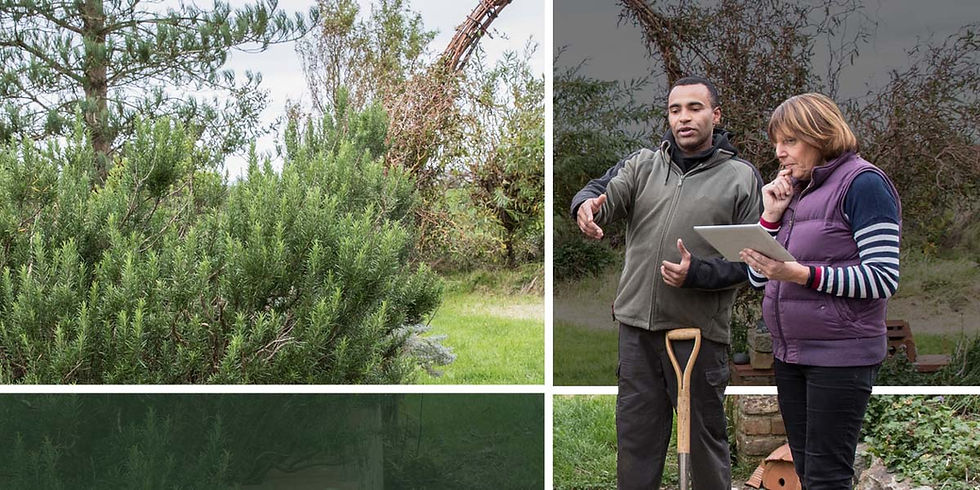The impact of summer heat on your plants and landscaping
- Rooted in Nature

- Jul 13, 2020
- 2 min read
Updated: Apr 30, 2024

The hot and dry summer weeks can severely stress our trees, shrubs and lawns, but homeowners can easily protect all of them!
During the heat of Maryland's summer, your landscape plants could be under severe stress. High temperatures, gusty winds, hail, rain and lightning can cause damage to our prized plants. Although we have little control over the weather, there are a number of things we can do to minimize the potential damage.
Drought stress on trees
During drought periods, it is imperative that landscape trees are watered on a regular basis if rainfall is not adequate. A good recommendation is to water three times per week during the summer months and twice a week during the spring and early fall if there is no rainfall. The typical lawn sprinklers are not adequate for our larger trees and shrubs. Adding a trickle system can be very effective to insure that each tree receives enough water. The simple and quick solution is to place a garden hose at several locations under the tree and run at 20 percent volume for 10 to 15 minutes on each spot. Applying nutrients and water to our trees will help insure health and vigor, even during dry months. Fertilizers should be applied according to soil testing recommendations and, in most cases, not after the heat of the summer.
Brown grass
Another area of concern is how we handle fertilizing and watering of our lawns. Most homeowners do have irrigation or sprinkler systems, but struggle with keeping their grass green. Keep in mind that Maryland lawns can consist of cool season grasses, Kentucky bluegrass, fescues and perennial ryegrass. These grasses grow well in the cool months of spring and fall. But once the hot, dry summer weeks arrive, these grasses start to struggle and often go dormant. What was once a lush, dark green lawn has now turned brown or at least light green. Unless you have a golf course or high maintenance turf, recommendations are to allow the grass to go dormant and not fight against its natural tendency to slow down during the summer months.
When watering your lawn, it is best to irrigate during the morning hours to insure that the foliage dries off rapidly to minimize disease potential. Watering at night might increase disease potential. Water is critical to quality turf.
Wind and other severe weather
High winds and lighting can cause severe damage to landscape plants. This can range from minor limb breakage to major tree damage. When limbs are broken, it is important to cut off as cleanly as possible to prevent further damage to the tree. In most cases, wound compounds are not needed. Where major tree splits or larger limbs are evident, the homeowner should contact a professional to assess the damage. This is especially true where the trees are a potential hazard to a home, overhead wires, play areas and other impacts to safety. Homeowners can contact their insurance company to evaluate what might be covered. To discuss damage, working with insurance companies, and more - please contact us at 443-846-0199 or info@rootedinnaturemd.com.



Comments